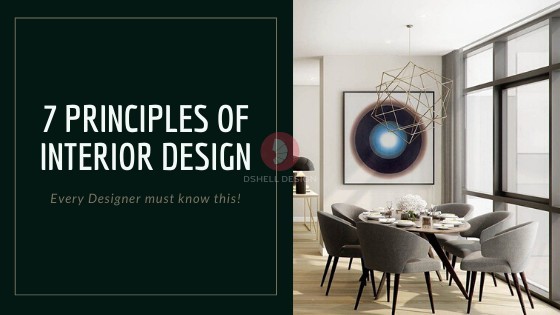
7 Basic Elements and Principles of Interior Design
When a person is thinking of interior design, words like creativity and flair immediately come to mind – but many people will be surprised to hear that there is a high level of science involved. Expert designers follow a set of “rules” based on interior design principles and elements. Elements and principles of interior design include space, line, form, light, color, texture, pattern & keeping them in balanced proportion is the key to creating a beautiful interior.
Interior design is an art of design that takes creativity and technicality. The space designed by the interior designer should be attractive and allow the user to perform his/her function. The object in any place or color, size & shape of an object never distracts the user while he/she performs his/her work.
So are you looking for some office interior design ideas or else these seven key elements will prove to be helpful? let me check it out.
Seven elements and principles of interior design you shold keep in mind while designing the interior.
1.Space
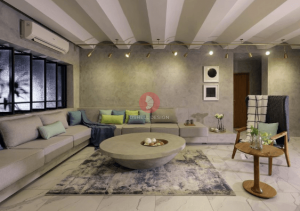
Space is the foundation of an interior, we need to understand the concept of space. The concept says “take all advantage of what is available to you”. Given space in relation to your work cannot be changed. So it is better to plot your design according to the available space.
Space is one of the most important elements of any interior design. It serves as a cornerstone on which any internal structure plan depends. Available ‘space’ cannot be easily changed. Meanwhile, most interior designers will not suggest you make any changes to the available space. So, you have to work with what you have.
Basically, space is divided into two different categories.
- Two Dimensional
It includes the floor and length & breadth of the room.
- Three Dimensional
It is a geometric three-partner model of the living space which includes length, breadth, and height of the given space.
In interior design, empty space is considered a “negative space”. Whereas, when objects are inserted into empty space such as furniture. Then the space is treated as a “positive space”. To maintain, a balance between positive and negative space is really important for any interior designer & either overcrowding or skimping on furniture items is going to affect the balance there.
How to create a space plan?
- The Bubble Plan
To start a space plan is basically done by roughly drawing and in the drawings through a map by the space shows by creating a bubble plan.
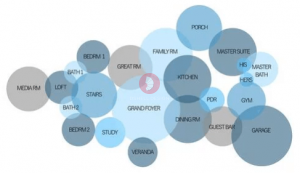
A simple diagram is given by our expert interior designers team that will show you what activities take place in space planning. After that, the relationship between these activities is described in the bubble plan.
- A detailed scale plan
In this, you should take a large piece of paper(A1/A2 size of sheet) and use a pencil to draw the design. Draw the given space that includes a window, doors, built-in cupboards, and the lightning place. To see all the fixtures and features on the plan you want to be able to perform.
2.Lines
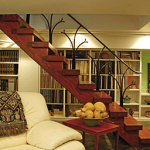
Lines provide visual guidance of interior space and act as a space to define. They are basically divided into three different categories: Horizontal, Vertical and Dynamic lines. These lines help to shape a room.
The Horizontal line contains a table, chair, and bed. Interior designers use horizontal lines to make a room appear longer and wider. But be careful, excess use of horizontal lines results in boring and uninspired space.
A vertical line, created by features such as doorways, windows, and Almira. The vertical line gives the illusion that the room is taller.
Dynamic Line also is known as “angular lines” refer to diagonal, zigzag, or curved lines. It is useful in structuring the staircase and adding a dramatic effect to the room.
3.Forms
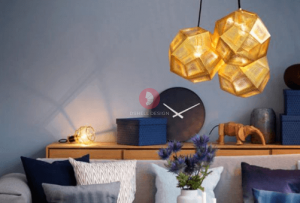
Any three-dimensional object in your home is a shape or a “Form”. We can easily create these forms by combining two or more shapеs. You can easily highlight them with the hеlp of other elements like texture, patterns, and colors.
There are two types of form follow in this, one is Geometric or” man-made” and the second one is Natural or organic form. Geometric forms are basically the hard lines and the square edges. Natural forms refer to those forms which are created by nature.
4.Patterns

Patterns always tell a story and add interest and give life to the interior design. It also adds the element of continuity and smooth transition in a living space.
Patterns can be of any shape and also have a repetitive design but most of them are attractive. A droplet-shaped vegetable pattern design is commonly in use nowadays. You can easily see this kind of pattern on the walls and other decorative surfaces.
These Patterns give you the ability to bring energy, interest, and contrast into your design. A beautiful pattern design helps to bring a room together and give depth to your space.
Importance of Pattern in Interior Design
- Patterns add drama
Really pattern helps to create drama in space; they are likely to be the feature in your home that helps to create wow-factor. And the right, patterns will be the hero of your design.
- The pattern provides direction and dimension
Your room will get a better view after a creative pattern. A pattern whether it is printed on the wall or the layout of tiles on the floor or wall has the ability to take the plain, two-dimensional surface and give it an almost 3D look.
- Pattern brings energy
Repetitive usage of patterns brings energy to you. One timber panel by itself would seem insignificant, but when it is repeated over and over again along a wall, there is an energy, a sense of movement. These repetitions help you to take you on a different node of the journey.
5.Light
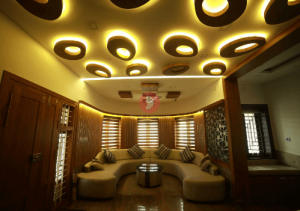
Onе of the most important elements of interior design is light. Lights help to highlight the other elements such as color, texture, patterns, forms, and lines. Without light, either geometric or natural, the texture and patterns don’t have any significance.
Nowadays, designers are using artificial lights on the window as well as on doors. Artificial lighting is mostly common in interior design. Artificial lighting is categorized into three major types as Task Lighting, Accent Lighting, and Mood Lighting.
Task lighting is generally used for a well-defined purpose. It includes light sources like table and bed lamps, these types of lighting are mostly applicable for a specific task.
Accent lights are used to highlight a particular thing or show specific items like artworks, structures & so on.
Mood lighting or ambient lighting is used for the basic purpose to set the mood of the living space and illuminate the overall space.
6.Colors
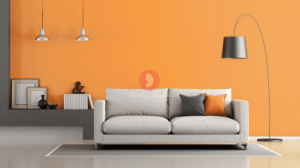
Color is a science on its own and is another important element that matters in interior design. It has the ability to create mood, and alter the perception of how big or small space is.
Each color defines three characteristics: Hue, Value, and Intensity. The interior designers have a better idea about all these characteristics. They perform various permutations and combinations with textures and colors to provide a better look to your space. For example, rеd is the best choice for the dining room and green for the bedroom as it is the color of еquility and health.
Colors are broadly classified into Primary and Secondary colors and they also include sub-categorized namely: Tertiary, Complementary, Analogous & Monochromatic colors.
7.Texture
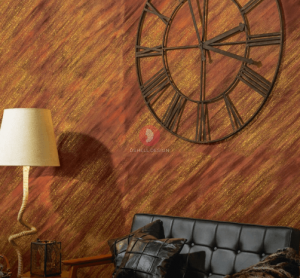
A Texture refers to the surface of the object. The texture is often overlooked, but it has the ability to bring a unique dimension to the room.
It usually comes in two different forms-
- Visual Texture
Visual texture refers to the texture that can easily be seen by our eyes. You can’t experience how these textures actually feel.
- Actual Texture
Actual or tactile textures have 3D characteristics that imply that you can easily see them and feel them with your hands.
Generally, if something is missing in a room, then a good interior designer will be able to identify that it will be due to a lack of texture. Texture plays an important part in every object that is chosen for a room. They reflect the taste and environment of the place so they should have to take care of full attention. The texture is one of the most important elements of interior design, each and every interior designer keeps it in mind while doing any implementation.
Conclusion:
So, these are some of the basic elements and principles of interior design. You should really keep these factors in mind and apply all these elements in your house or office. By doing so you can easily achieve a beautiful and attractive interior design for your space.
Beautiful interior design can change the entire look of a place. You can easily give a soothing and comforting look to a dull place with proper customization and design.
Further on, if you still have any doubt then you can contact our interior designers. They are experts in the field of interior design. You can contact them through our toll-free no – 1800-121-997777.
- Category : interior design
- Type :
